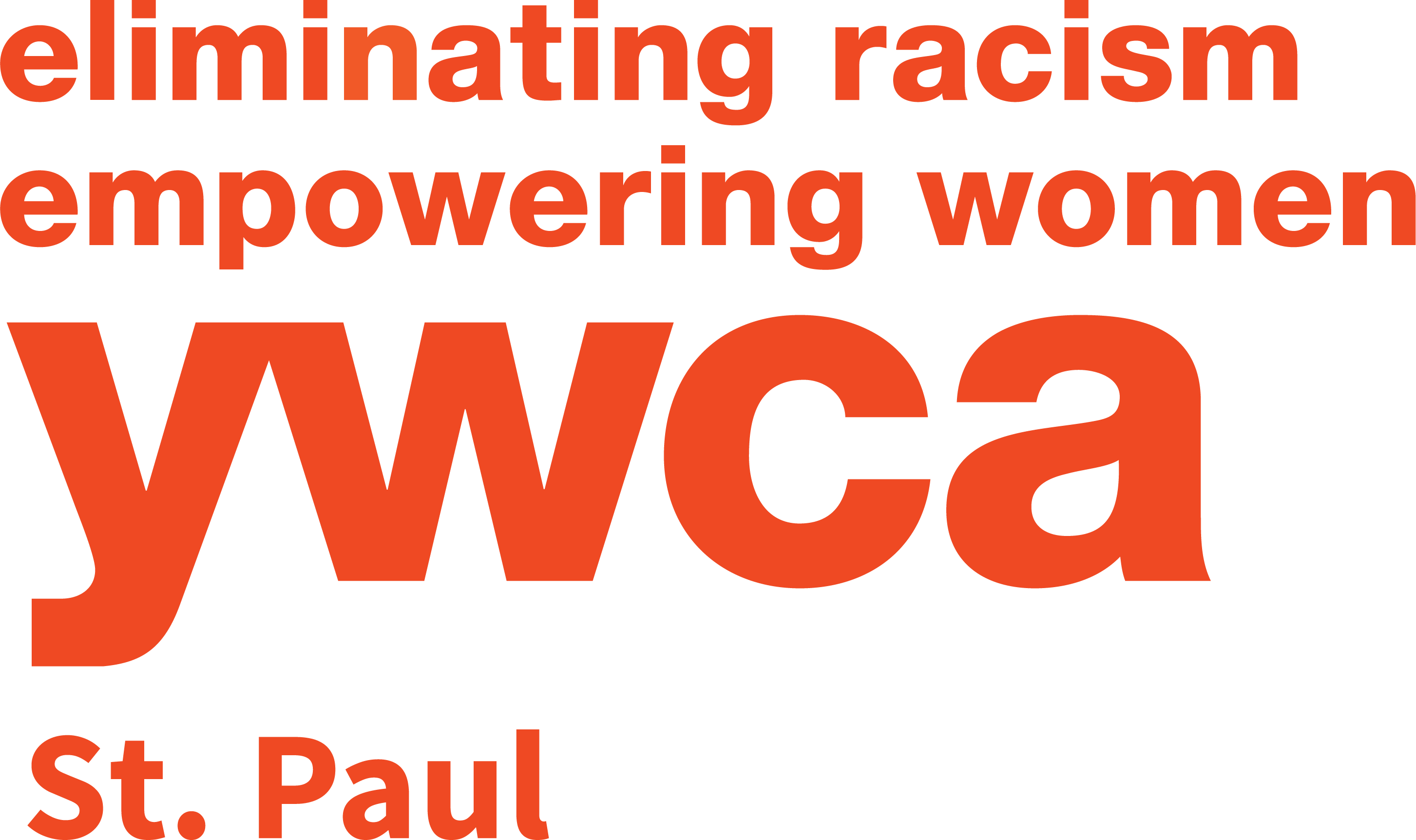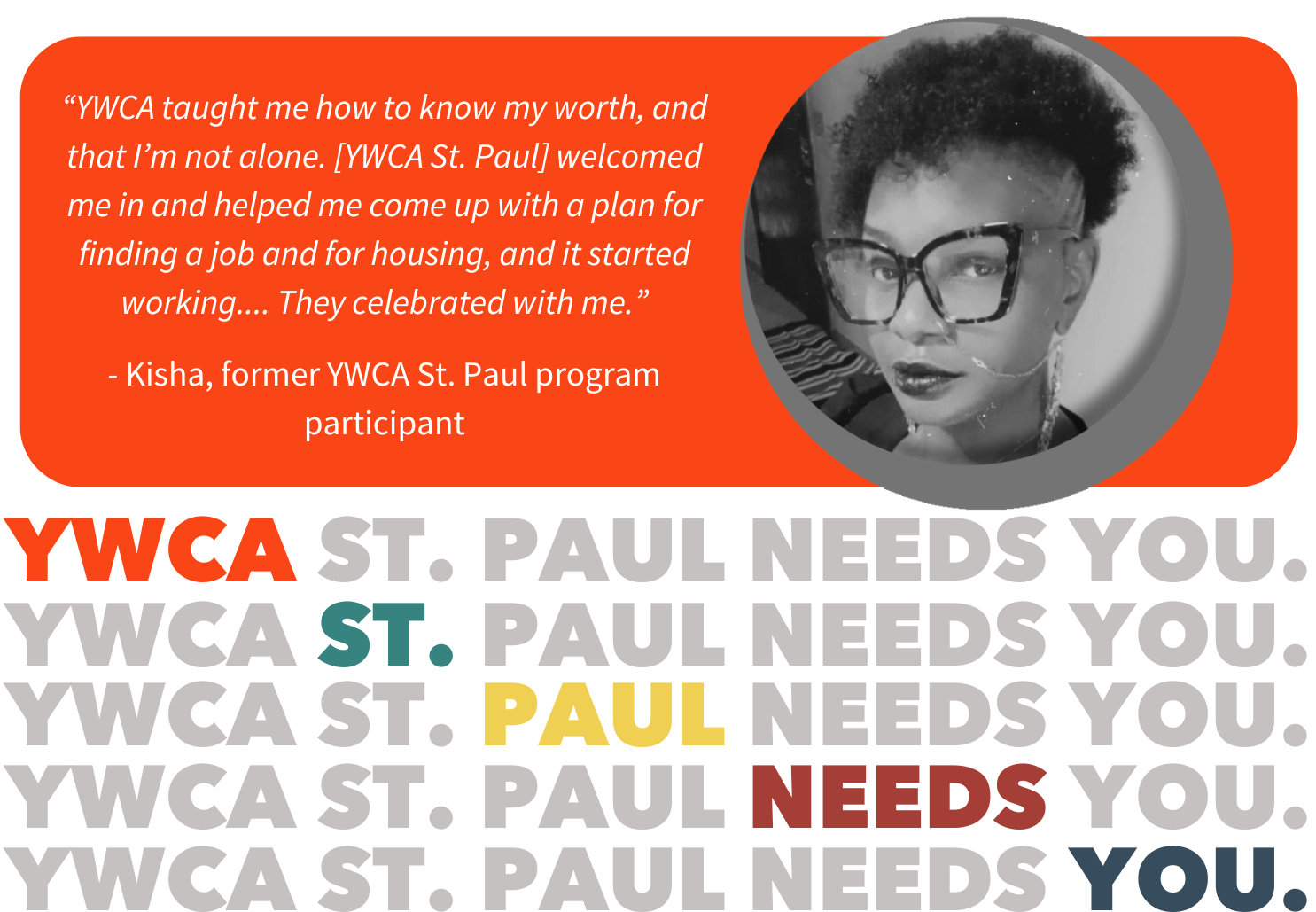
Leadership has been a theme throughout board member Anika Ward’s entire life. Her desire to constantly reimagine (and redesign) what is possible is at the core of her work, which is why she started Sankofa Leadership Network.
Where did this inspiration come from? It may have begun when she was young. As a child in the “post-Rondo” neighborhood, Ward felt a sense of continued connectedness to the community that existed before the freeway disrupted the community. The beautiful neighborhood her father talks about; with Black homeownership, successful Black-owned businesses all around, and a feeling of safety. “I felt this sense of pride and belonging in this space because of what was built before me, but also an understanding of what was lost/sacrificed.” Growing up, she visited YWCA with her dad, who stressed the importance of approaching decisions with a thoughtful eye for equity. Centering equity meant noticing the effects of power imbalances and recognizing who is not being included or benefiting.
Ward speaks of the importance of her developmental experiences in her work’s focus on culture – from the sense of belonging she felt as a black person in black spaces – to the impact of her experiences being black in white spaces. The juxtaposition of these two experiences had a profound impact on who she is today.
She attended Benjamin E Mays for her first few years of elementary school, before transferring to a local private school at the advice of educators. While her first school was less academically challenging, it was rich with social and cultural connections. The fact that many of her peers were also descendants of “Old Rondo”—meant families had strong, long-spanning connections with one another.
Her new school was highly esteemed, with prestigious alumni junior Olympians, NASA astronauts, and change leaders around the globe. Socially, Ward’s experiences there would create a deep sense of discomfort and isolation. By the fourth grade—as she and her peers became increasingly aware of differences in culture, vernacular, and appearance—Ward’s blackness suddenly became a significant point of discussion and tension. For the first time, she recalls “feeling very black”, and very frustrated— in what felt like a very white space.
By sixth grade, this feeling drove her to push her parents to move her back to public school, and later to attend Florida A&M University, a HBCU (Historically Black Colleges and Universities). “Feeling very black” took on an extremely different meaning in a space that was designed for—and by—black people. She became fascinated with the idea that a factor as simple as “Who designed or created this space?” could have such a powerful impact on determining who would flourish there. This question would fuel her future leadership work.
After attending Florida A & M, she worked at Bond Community Health Center in Tallahassee. It was a momentous change from her days back in high school. The patients, staff and community at BCHC was largely African American. “Again, Blackness was everywhere. Blackness was the norm rather than a factor that made me weird, cool, or interesting.”
Ward came back to Minnesota, and as a 26-year-old, became executive director at ARTS-Us Center for African Diaspora Arts & Culture. She says, ‘I was a twenty-six-year-old, with little experience in organizational leadership. I completed my bachelor’s in human services at Concordia University while learning to lead an organization. This is where I learned that I sincerely enjoyed organizational visioning, strategy development, and change management.”
Fast forward to her next opportunity as director at the Kitty Andersen Youth Science Center at the Science Museum of Minnesota, a department focused on connecting young women, and young people from communities of color to STEM career networks and professional experiences. For the first time since her elementary/private school days, she stepped back into a majority and historically white institution—this time prepared for a dramatic culture shock. While she admits, “there were many moments when I felt like that little girl again—in a space that was not designed with me in mind,” the Science Museum provided powerful experiences that would help shape Ward’s perspectives on leadership.
With support from key institutional leaders, Ward made strategic, structural, and cultural shifts within the department that allowed her to build an incredibly talented team of leaders with diverse backgrounds, skillsets, and expertise. Predictably, this diversity of perspective brought new forms of tension and challenge. By centering agreed upon values of respect, gratitude and authenticity, this team worked to build more inclusive practices, transforming an already successful program into one that produced even more equitable and powerful outcomes for youth, families, and communities. Through this experience, Anika gained a deepened understanding for the new possibilities brought by strategies advancing diversity and inclusion to the work of advancing an organization’s mission, vision, and values.
She would later bring this lens to government and corporate institutions, through her work to help advance DEI strategies at the State of Minnesota and at Blue Cross and Blue Shield. She’s continued now, in her work at Sankofa Leadership Network, to support leaders to create environments where people feel empowered to bring their “whole self” forward.
Often when an institution successfully recruits a person from a group underrepresented in their field or organization, there is a sense of accomplishment and/or celebration of the new “diversity hire.” However, once the person steps into the institution, they may learn very quickly that, if they want to be successful and/or accepted, they’re required to “conform” to the norms of the institution—norms which are rarely reflective of their own cultural ways of being. This means we often learn to shed or remove parts of our identity (as we would our coats) as we enter the office building each day.
Now, as she leads her own organization, when considering all she has learned about leadership, Ward shares a few things that have been very consistent for her. She says she has learned to “recognize and pay attention to the outcomes that your leadership is consistently producing”. For example, if you are consistently hiring people who look like you only, you likely have adopted a hiring system that is designed to produce those outcomes. “Remember that the ways you engage with people (which is impacted by your own culture and life experiences) will impact who will feel comfortable working for you. For you as a leader to produce something different, you as a leader have to redesign your own engagement/leadership strategies. Considering the mindsets and/or skill sets that need to change to be your best selves is the most powerful tool in creating positive change,” Ward said.
One of the toughest realizations for leaders, according to Ward, is that creating a work environment representative of the differences across your communities means embracing new leadership challenges, as perspectives and opinions not previously voiced emerge and challenge the status quo. As they welcome diverse people to the table, leaders must also be focused on nurturing an environment where people feel appreciated for bringing their most authentic and courageous selves into the work.
What she is most proud of these days is what she draws from. Early on in her leadership journey, Ward says she made a pivot in how she shows up in the world. During her early years at the Science Museum (as she was questioning whether she “belonged” in that space), she began to double-down on her personal commitment to truth, authenticity, and intentionality. She decided to give the people and the environment “all that was needed to know to accurately accept or reject me,” and determined that she’d accept the result (no matter what it was) as a gift that would point her away from “what wasn’t for me, and more solidly in the direction of what was.” The result was a strengthened sense of belonging in a space that appreciated her most genuine contributions.
Ward’s idea of being a servant-leader once meant figuring out what style team members needed from me and shifting my style to match their expectations. She says, “Earlier on in my leadership journey, if I noticed someone feeling intimidated by my energy, I would begin to monitor (and “tone-down”) my voice, enthusiasm, and body language until they appeared more comfortable. While that approach seemed successful in the very short-term, it never resulted in my ability to build the type of trust and respect I was looking for. At some point, I gave myself permission to risk failure/rejection by sharing my most authentic self. While I understood that meant my presence would make some people uncomfortable, it allowed me the opportunity to be truly understood and accepted by others, and ultimately allowed me to have a much greater impact.”
In the coming years, she anticipates her work in leadership expanding to a broader set of leaders. “What if we made these types of investments (i.e., investments businesses make in developing professionals) in leaders at an earlier age? What if we’re intentional about developing youth into community leaders who are empowered to design their own philosophies and approaches to leading change?”
Ward has three pieces of advice to share with young women of color considering careers in leadership. First, she says, choose courage. (“It’s not courage when you sacrifice your authenticity to fit in.”) Next, choose patience—with ourselves and others. We make many missteps as we work to be our best to be thoughtful, impactful and successful. For those who are walking courageously, there will be many moments where grace or patience is needed. And last, hold on as tightly as you can to your authenticity. “Our authenticity is the secret sauce to our success.”





